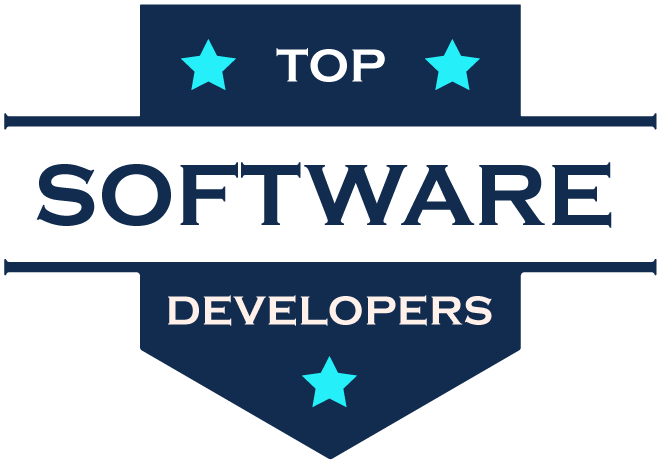As businesses increasingly adopt cloud-native architectures, containerization has become a cornerstone of modern application development. AWS Fargate, a serverless compute engine for containers, has emerged as a game-changer in simplifying container management. Launched in 2017, Fargate allows developers to run containers without managing underlying infrastructure, making it a preferred choice for scalable, efficient deployments. In 2025, with the rise of hybrid cloud strategies and microservices, Fargate’s relevance is greater than ever. This comprehensive guide explores AWS Fargate’s features, benefits, use cases, setup process, best practices, and future trends, offering a roadmap for leveraging this powerful service.
What Is AWS Fargate?
AWS Fargate is a serverless compute engine that integrates seamlessly with Amazon Elastic Container Service (ECS) and Amazon Elastic Kubernetes Service (EKS). Unlike traditional container management, where users provision and manage EC2 instances, Fargate abstracts server management, allowing developers to focus on building and deploying applications. By defining container tasks and specifying resource requirements, users can launch containers effortlessly, with AWS handling scaling, patching, and infrastructure maintenance. In 2025, Fargate supports a wide range of workloads, from microservices to batch processing, making it a versatile tool for modern enterprises.
Key Features of AWS Fargate
Fargate’s feature set is designed to enhance developer productivity and operational efficiency. Here are its core capabilities:
- Serverless Architecture: No need to manage servers or clusters. Fargate automatically provisions compute resources based on task requirements.
- Flexible Resource Allocation: Define CPU and memory at the task level, with granular options (e.g., 0.25 vCPU to 16 vCPU, 512 MB to 120 GB memory).
- Seamless Integration: Works with ECS and EKS, supporting Docker containers and orchestration tools like AWS Step Functions.
- Networking Options: Supports Amazon VPC for private networking, Elastic Load Balancers for traffic distribution, and task networking for secure communication.
- Sicurezza: Integrates with AWS Identity and Access Management (IAM), AWS Key Management Service (KMS), and AWS Secrets Manager for robust access control and encryption.
- Auto Scaling: Automatically adjusts task instances based on demand, ensuring optimal performance during traffic spikes.
- Observability: Integrates with Amazon CloudWatch for monitoring metrics, logs, and alarms, plus AWS X-Ray for tracing.
In 2025, Fargate’s enhanced support for GPU workloads and improved integration with AWS Graviton processors will further boost performance and cost efficiency.
Benefits of AWS Fargate
Fargate offers compelling advantages for organizations seeking agility and cost optimization:
- Simplified Operations: Eliminates the need for server provisioning, patching, or cluster management, reducing operational overhead by up to 50% compared to EC2-based setups.
- Efficienza dei costi: Pay only for the compute and memory used by tasks, with per-second billing. Spot pricing and Savings Plans can reduce costs by up to 70%.
- Scalabilità: Scales tasks instantly to handle workloads, supporting high-traffic events like Black Friday sales or real-time analytics.
- Developer Productivity: Frees developers from infrastructure concerns, enabling faster development cycles and quicker time-to-market.
- Sicurezza e conformità: Built-in isolation, IAM roles per task, and compliance with standards like HIPAA and PCI DSS ensure enterprise-grade security.
- Portability: Supports hybrid and multi-cloud strategies through EKS, allowing consistent container management across environments.
These benefits make Fargate ideal for startups, enterprises, and industries like finance, healthcare, and e-commerce.
AWS Fargate vs. Alternatives
To understand Fargate’s value, it’s worth comparing it to other AWS compute services:
- Fargate vs. EC2: EC2 offers full control over instances but requires manual scaling and patching. Fargate abstracts infrastructure, trading flexibility for simplicity. Fargate is 20-30% more expensive per vCPU but saves on operational costs.
- Fargate vs. Lambda: AWS Lambda is event-driven and suited for short-lived functions, while Fargate supports long-running containers with more configuration options.
- Fargate vs. EKS/ECS with EC2: Running ECS or EKS on EC2 provides customization but increases management complexity. Fargate simplifies deployment but limits low-level control.
- Fargate vs. Azure ACI/Google Cloud Run: Azure Container Instances and Google Cloud Run offer similar serverless container platforms, but Fargate’s tight integration with AWS services like CloudWatch and IAM gives it an edge in the AWS ecosystem.
In 2025, Fargate’s maturity and ecosystem integration make it a top choice for AWS-centric organizations.
Use Cases for AWS Fargate
Fargate’s versatility supports a wide range of applications:
- Microservizi: Run modular, independently scalable services for e-commerce platforms or SaaS applications.
- Batch Processing: Execute data processing jobs, such as ETL pipelines or machine learning model training, with dynamic resource allocation.
- Applicazioni Web: Host containerized web apps with auto-scaling and load balancing for consistent performance.
- CI/CD Pipelines: Power continuous integration and deployment workflows using tools like AWS CodePipeline.
- Event-Driven Architectures: Process real-time data streams from Amazon Kinesis or SQS for analytics or IoT applications.
- Hybrid Cloud Deployments: Use EKS with Fargate to manage containers across on-premises and cloud environments.
For example, a retail company might use Fargate to deploy a containerized checkout service, scaling automatically during peak shopping seasons.
Getting Started with AWS Fargate
Here’s a step-by-step guide to deploying a containerized application on Fargate using Amazon ECS:
Step 1: Set Up Prerequisites
- Create an AWS account and configure the AWS CLI.
- Install Docker to build and test containers locally.
- Ensure IAM roles for ECS tasks have permissions for CloudWatch, S3, and other required services.
Step 2: Build and Push a Docker Container
- Write a Dockerfile for your application (e.g., a Node.js app).
- Build the image: docker build -t my-app.
- Push to Amazon Elastic Container Registry (ECR):
Step 3: Create an ECS Cluster
- In the AWS Management Console, navigate to ECS and create a cluster with Fargate as the infrastructure.
- Configure VPC, subnets, and security groups for networking.
Step 4: Define a Task Definition
- Create a task definition in ECS, specifying:
- Container image from ECR.
- CPU (e.g., 0.5 vCPU) and memory (e.g., 1 GB).
- Port mappings (e.g., 80 for HTTP).
- IAM roles and environment variables.
Step 5: Launch a Service
- Create a service in the ECS cluster, selecting Fargate as the launch type.
- Configure the number of tasks, load balancer (if needed), and auto-scaling policies.
- Deploy the service and verify it’s running via CloudWatch logs.
Step 6: Monitor and Scale
- Use CloudWatch to monitor CPU, memory, and request metrics.
- Set up auto-scaling based on metrics like CPU utilization (e.g., scale out at 70%).
This process typically takes 30-60 minutes for a simple application.
Best Practices for AWS Fargate in 2025
To maximize Fargate’s potential, follow these best practices:
- Optimize Resource Allocation: Right-size CPU and memory to avoid overprovisioning. Use AWS Compute Optimizer for recommendations.
- Leverage Spot Pricing: Use Fargate Spot for non-critical workloads to save up to 70% on costs.
- Enhance Security: Assign least-privilege IAM roles, enable encryption with KMS, and use private subnets in VPC.
- Monitoraggio delle prestazioni: Set CloudWatch alarms for high CPU or memory usage. Use X-Ray for tracing application bottlenecks.
- Automate Deployments: Integrate with AWS CodePipeline and CodeBuild for CI/CD pipelines to streamline updates.
- Use Tagging: Tag tasks and services for cost allocation and tracking, especially in multi-team environments.
- Plan for Fault Tolerance: Distribute tasks across multiple Availability Zones and configure health checks with load balancers.
In 2025, adopting AWS Graviton-based Fargate tasks can improve price-performance by up to 40%.
Cost Management with AWS Fargate
Fargate’s pricing is based on vCPU and memory usage per second, with regional variations.
- Use AWS Cost Explorer to analyze usage patterns.
- Apply Savings Plans for predictable workloads (up to 50% savings).
- Monitor idle tasks and terminate unused resources.
- Combine Fargate Spot with On-Demand for hybrid cost strategies.
Compared to EC2, Fargate is pricier per compute unit but reduces management costs, often balancing out for small to medium workloads.
Challenges and Limitations
While powerful, Fargate has limitations:
- Costo: More expensive than EC2 for large, stable workloads.
- Control: Limited access to underlying OS or hardware configurations.
- Cold Starts: Initial task launches may experience latency (10-30 seconds).
- Resource Limits: Maximum 16 vCPU and 120 GB memory per task may constrain high-performance workloads.
In 2025, AWS has mitigated some issues with faster cold starts and expanded resource options, but EC2 or EKS may still suit niche use cases requiring deep customization.
AWS Fargate in 2025: Trends and Innovations
Looking ahead, Fargate is poised to evolve with these trends:
- AI/ML Workloads: Enhanced GPU support enables Fargate to run machine learning inference tasks.
- Sustainability: Integration with AWS’s carbon-neutral goals, leveraging Graviton processors for energy efficiency.
- Hybrid Cloud Growth: EKS Anywhere with Fargate extends serverless containers to on-premises environments.
- Security Enhancements: Advanced encryption and zero-trust architectures align with rising cybersecurity demands (global data storage projected to hit 200 zettabytes by 2025).
- Developer Tools: Improved CLI and CDK support simplify Fargate deployments.
These advancements position Fargate as a leader in serverless containerization.
Real-World Success Stories
- SmugMug: Migrated petabytes of data to ECS with Fargate, achieving “blazingly-fast” performance and scalability for photo-sharing services.
- Internet Travel Solutions: Streamlined travel booking platforms using Fargate, reducing infrastructure costs by 30% while improving uptime.
- FinTech Startup: Deployed a microservices-based payment platform on Fargate, scaling seamlessly during transaction spikes and ensuring PCI DSS compliance.
These examples highlight Fargate’s ability to deliver reliability and efficiency across industries.
Conclusione
AWS Fargate has redefined container management, offering a serverless, scalable, and secure platform for modern applications. Its ability to abstract infrastructure complexities empowers developers to focus on innovation, while its integration with AWS services ensures enterprise-grade performance. In 2025, Fargate’s support for AI, hybrid cloud, and sustainable computing makes it a cornerstone of cloud-native strategies. Whether you’re deploying microservices, batch jobs, or web applications, Fargate provides the tools to succeed. At Carmatec, we’re committed to helping businesses harness Fargate’s potential through tailored cloud solutions, ensuring agility and growth in an ever-evolving digital landscape.
Domande frequenti
1. What is AWS Fargate, and how does it benefit businesses in 2025?
AWS Fargate is a serverless compute engine for containers, integrated with Amazon ECS and EKS, allowing businesses to run Docker containers without managing servers. In 2025, Fargate simplifies deployment of microservices, web applications, and batch processing by automating scaling, patching, and infrastructure maintenance. Businesses benefit from reduced operational overhead (up to 50% compared to EC2), cost efficiency through per-second billing, and enhanced agility, enabling faster time-to-market for innovative applications.
2. How does AWS Fargate compare to traditional EC2-based container management?
Unlike EC2, where users manage instances, scaling, and patching, Fargate abstracts infrastructure, offering a serverless experience. While EC2 provides more control over OS and hardware, Fargate is simpler, requiring only task definitions for CPU and memory. Fargate is 20-30% pricier per vCPU but reduces management costs, making it ideal for dynamic workloads. In 2025, Fargate’s integration with AWS Graviton processors further enhances its price-performance edge.
3. What types of applications are best suited for AWS Fargate?
Fargate excels for containerized applications like microservices, web apps, batch processing, CI/CD pipelines, and event-driven architectures. For example, e-commerce platforms use Fargate to scale checkout services during peak traffic, while data-driven companies leverage it for ETL pipelines. In 2025, Fargate’s support for GPU workloads also makes it suitable for machine learning inference, broadening its appeal across industries like finance, healthcare, and IoT.
4. How can businesses ensure cost efficiency when using AWS Fargate?
To optimize costs, businesses should right-size task resources using AWS Compute Optimizer, leverage Fargate Spot for non-critical workloads (saving up to 70%), and apply Savings Plans for predictable tasks (up to 50% savings). Monitoring usage with AWS Cost Explorer and terminating idle tasks further reduces expenses. In 2025, combining Fargate with Graviton-based tasks can improve cost efficiency by up to 40% compared to standard configurations.
5. What security features does AWS Fargate offer to protect containerized applications?
Fargate provides robust security through task-level IAM roles, ensuring least-privilege access. It supports encryption with AWS KMS, secure networking via Amazon VPC, and integration with AWS Secrets Manager for sensitive data. Compliance with standards like HIPAA and PCI DSS makes it enterprise-ready. In 2025, Fargate’s enhanced zero-trust capabilities and container isolation protect applications in high-stakes environments like fintech or healthcare.













